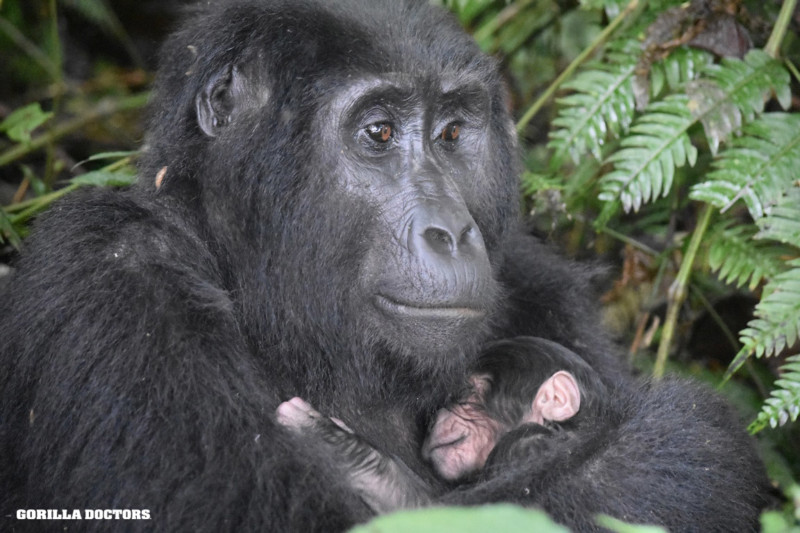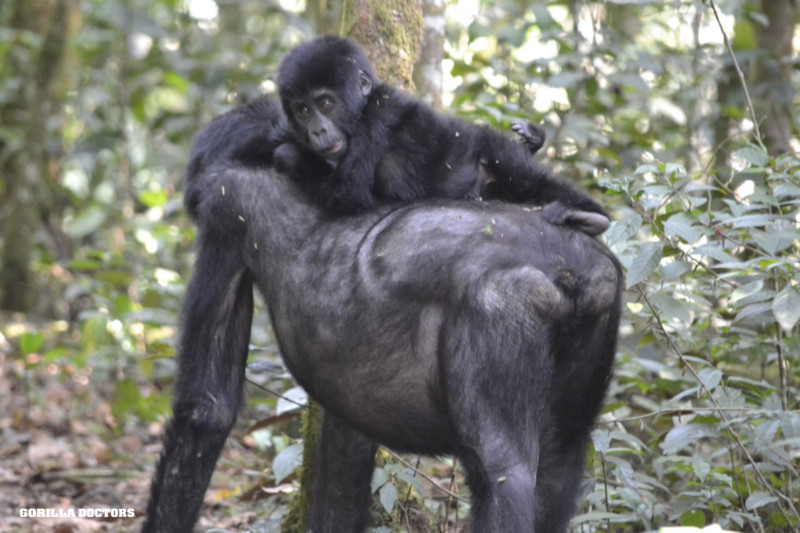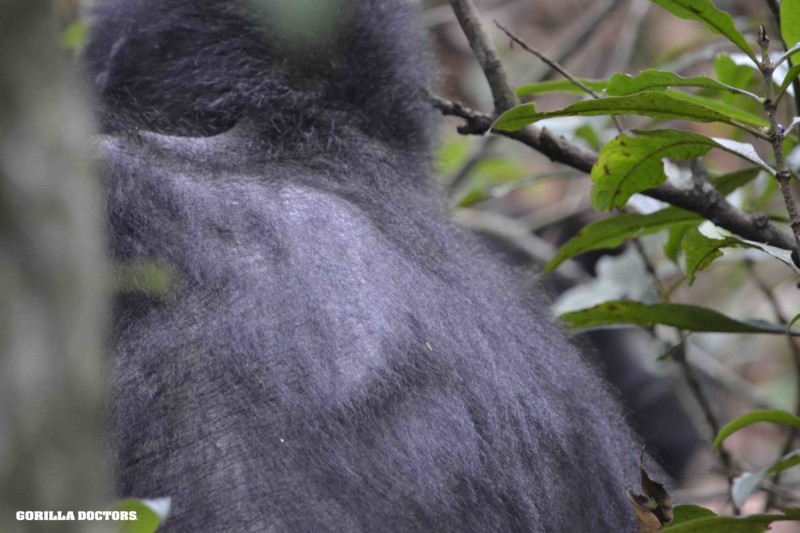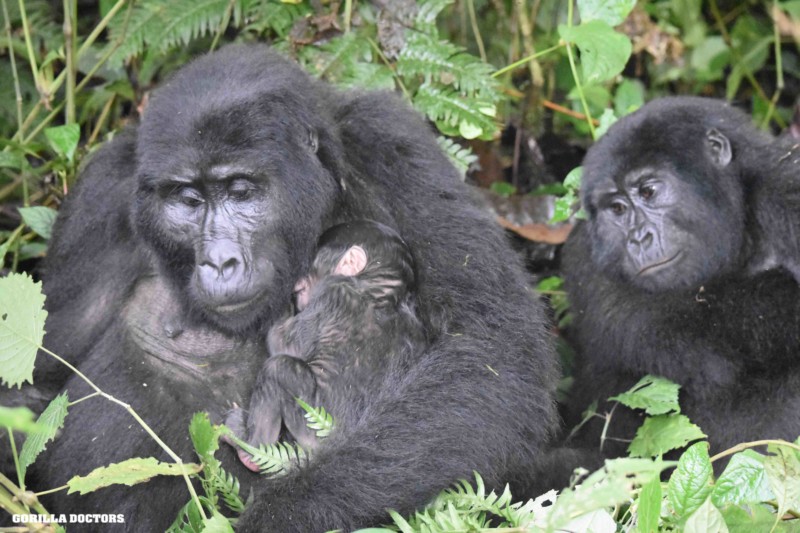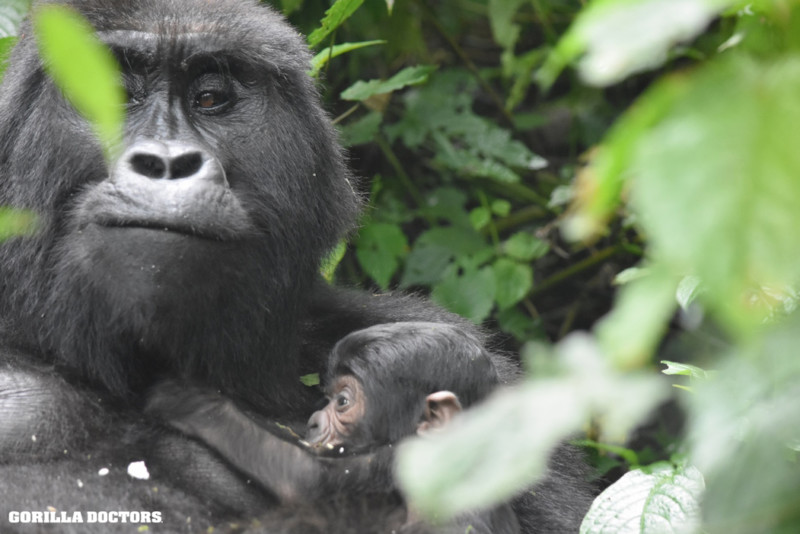The Positive Ripple Effect of Saving One Mountain Gorilla
By Gorilla Doctors Staff on Monday, September 14th, 2020 in Blog.Ruterana, a female mountain gorilla in Rushegura group, who just gave birth on August 29th, makes a great case for the importance of treating individual gorillas for the good of the entire species. Gorilla Doctors first started monitoring and treating Ruterana in 2012 for a heavy parasite burden that was impacting her health. More recently, in 2018, Gorilla Doctors administered multiple treatments, again for parasites, and her full recovery paid off with the arrival of her newborn two weeks ago. Here is Ruterana’s story, and while her name roughly translates to “trouble causer”, she has been anything but!
Location: Bwindi Impenetrable National Park, Uganda
Gorilla Group: Rushegura
Gorilla: Ruterana, adult female
Gorilla Doctors: Fred Nizeyimana and Ricky Okwir Okello
Start Date: January 19, 2018
End Date: August 31, 2020
As early as 2012, Ruterana had suffered from and been periodically treated for a heavy parasite burden. In late 2017 she again began losing weight and hair and appeared weak, although she was actively feeding and keeping up with the group. Her infant at the time was suckling less than normal and was smaller than other infants in the group who had been born later.
January 19, 2018 – Given Ruterana’s history with parasites, Dr. Ricky prepared deworming medication before trekking into Bwindi to conduct a monitoring visit and clinical assessment of Ruterana’s condition. Upon arrival, Dr. Ricky observed that Ruterana was severely emaciated, had significant hair loss, and appeared weak despite actively feeding. He also collected fecal samples for laboratory analysis, and proceeded with administering a first dose of deworming medication via dart. Daily monitoring of Ruterana’s condition would continue and Gorilla Doctors planned to administer a second dose in two weeks (Note: deworming medication is administered in multiple spaced-out doses to give the animal time to expel parasites from the first treatment).
January 22, 2018 – Dr. Ricky conducted a post-treatment assessment of Ruterana and while it was too soon for her body condition to show any change, she was bright, alert, feeding and keeping up with the group. A significant quantity of dead and nearly dead parasites were found in her feces, a positive sign that the medication was working.
February 3, 2018 – Dr. Fred trekked to Rushegura group to assess Ruterana’s condition and administered the second round of deworming medication via dart. Dr. Fred noted a slight improvement in Ruterana’s hair coat and she was actively feeding but her infant was not observed suckling during the observation and while playful, seemed weak. Close monitoring of Ruterana and her infant would continue, and over the next several weeks she improved significantly with her body weight and hair coat returning to a normal, healthy condition.
Since Ruterana’s last treatment she has maintained her health and routine health checks of Rushegura group over the last two years showed her infant becoming a healthy, thriving juvenile whose name is Rushokye, which means “hairy body.”
During Dr. Ricky’s most recent health check he was delighted to discover a tiny, new arrival to the group.
August 31, 2020 – After three hours of trekking through a swampy area of Hakimori in Bwindi, Dr. Ricky and park rangers were rewarded with not one but two new infant mountain gorillas! Adult female Kibande had been observed with a newborn on August 27th and Ruterana’s newborn appeared to be about two days old, so likely born on August 29th.
A Note from our Executive Director
The history of Ruterana’s illness and recovery, resulting in the survival of her first infant and the arrival of her second, shows the clear and tangible impact of our work. Treating the health of each individual gorilla has long-term population level consequences, and in the case of Ruterana, treating her while she had a nursing infant also resulted in the infant’s survival. While mountain gorilla numbers are increasing, their overall population size (~1,063) is small and vulnerable. Every individual life is essential to the long-term survival of the species and Ruterana’s story and beautiful new infant are just the hope and inspiration we all need to keep saving this species, one gorilla at a time. Welcome to the world little one!


 Donate
Donate
